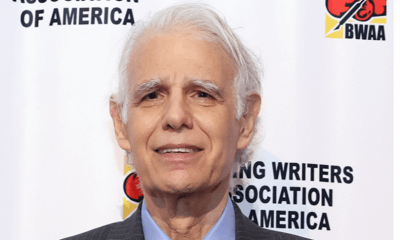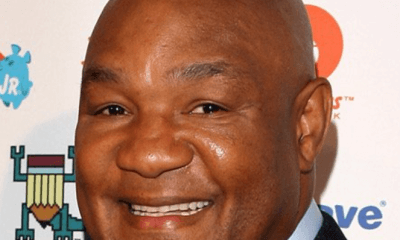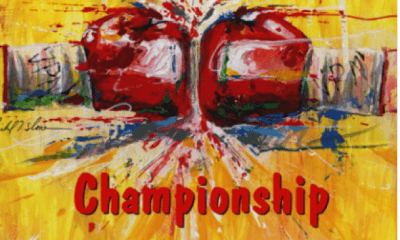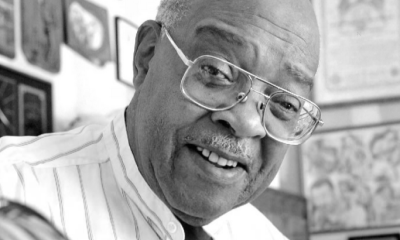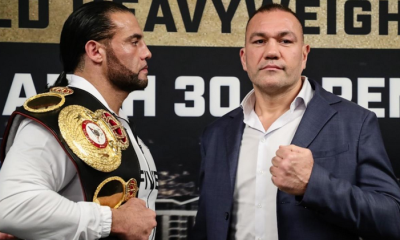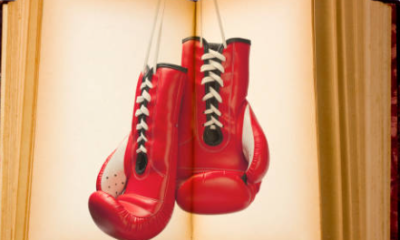Featured Articles
Former HBO Sports Exec Kery Davis Thriving at Howard University
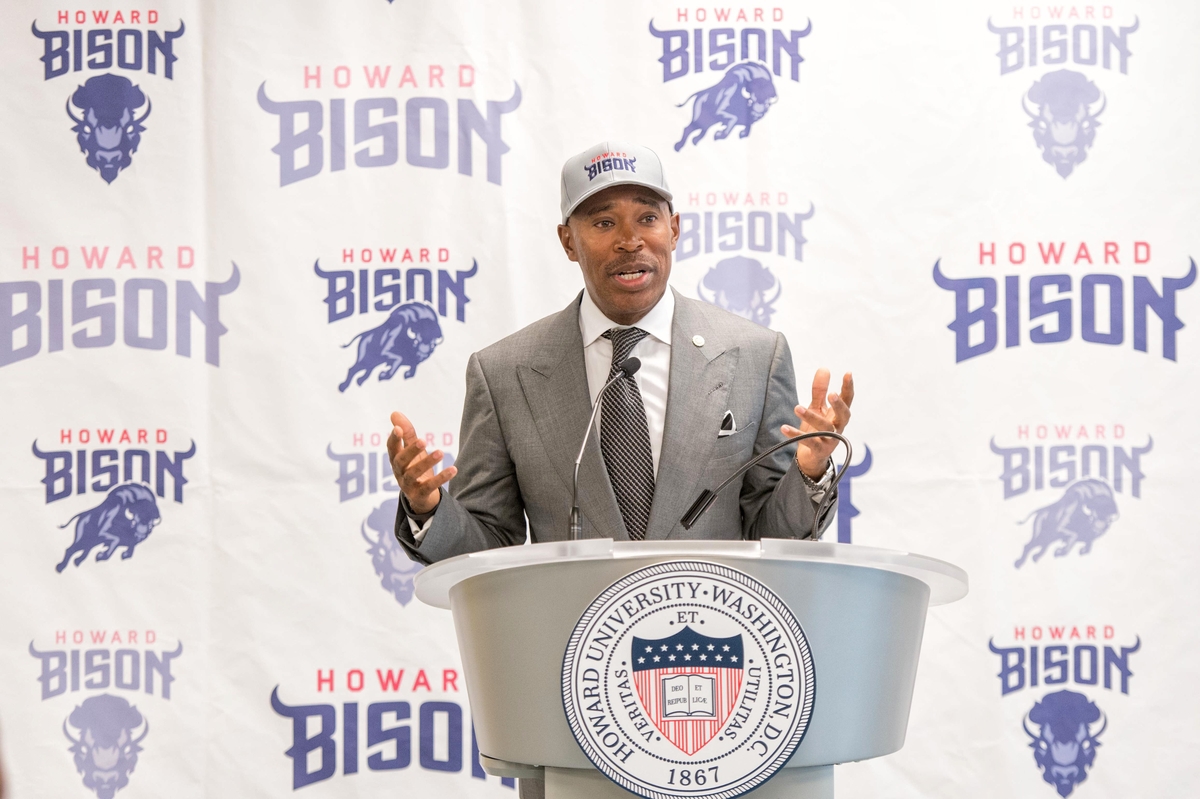
It was, in the words of the immortal baseball philosopher Yogi Berra, like déjà vu all over again for Kery Davis, the former senior vice president of HBO Sports. There the former Dartmouth College point guard was, back in Las Vegas where he had been a key figure in so many memorable boxing matches, enjoying what some would consider the intercollegiate equivalent of Buster Douglas over Mike Tyson, except that this new sense of exultation was not happening at ringside in an opulent casino-hotel on the neon-lit Strip. It was taking place in the press box at Sam Boyd Stadium, where Davis was watching the Howard University Bison shock the Nevada-Las Vegas Runnin’ Rebels, 43-40, in the most astounding upset in college football history, at least in terms of a point spread. The oddsmakers with the Vegas sports books had pegged the Bison as 45-point, no-chance underdogs, making the final result not so much Douglas over Tyson as, say, Don Knotts over Tyson.
Except that this miracle might not have as miraculous as it must have appeared at first glance. When Davis officially took over as athletic director at Howard on Sept. 9, 2015, the nation’s most academically prestigious but sports-deficient historically black college had a football program that wasn’t merely temporarily down. It was down and indisputably out, if not the most inept team in what is now known as the Football Championship Subdivision (formerly Division 1-AA), then certainly in the conversation. The first game Davis attended in his new role, three days after his hiring became official, was Howard’s 76-0 loss at Boston College. In its opening game a week earlier, sans Davis, the Bison had taken a 49-0 whipping at Appalachian State.
“We are a long way from being competitive with a team like Boston College,” a stunned Davis said then about what had to feel like a cold slap of reality. “We play in a conference (the Mid-Eastern Athletic Conference) where we think we can be competitive even this year. Our goal is to one day compete with the BCs and Notre Dames, but that’s a very difficult thing to achieve in one or two years on the football field. You can do it a lot quicker in some other sports.”
Davis’ tepid enthusiasm for the remainder of that 2015 season proved to be unjustified. The Bison finished 1-10, and they followed that with a 2-9 campaign in 2016, their 12th non-winning season in 15 years. That prompted Davis to dismiss fifth-year head coach Gary “Flea” Harrell, a former star Howard wide receiver who had played a key role with the school’s undefeated 1993 MEAC championship team. Davis set about identifying someone who could lead Howard, which had won mythical black national championships in 1997 and 1998, back to prominence and he determined that that person was Mike London, then the associate head coach at the University of Maryland. London had enjoyed success at both Richmond University, which he had guided to a FCS national championship in 2008, and at the University of Virginia, where he was named the Atlantic Coast Conference’s Coach of the Year in 2011. London has proven to be somewhat of a Magic Mike, at least if last weekend’s historic upset is any indication.
“Our win over UNLV was exhilarating and it was a huge shot of adrenalin for our program, but I had already seen the culture change,” Davis said. “We had done a number of things we needed to do in order to compete. It’s a process. Win or lose that game, I knew we were no longer the Howard that lost 76-0 to Boston College.
“Might we still have a couple of Saturdays like that? Yeah, we might. We only have 57 (football) scholarships as opposed to 85 for the UNLVs of this world. The numbers sometimes catch up to you. But in terms of our preparedness, we are now able to bring some resources to bear that will allow us a chance to compete at that level.”
Howard’s stunner over UNLV is important for reasons that transcend football. One of the most significant victories since the sport was first played at the Washington, D.C., school in 1893 came the day before Davis’ 58th birthday, and he shared the win in the company of his wife, Samantha, son Jourdan and daughter Lindsay. That this cornucopia of happy circumstances happened in Las Vegas, a city Davis had often visited and enjoyed during his 17 years at HBO, which began with his stint as director of programming and business affairs in 1997 and continued after he was promoted to senior vice president in 2000, was a homecoming of sorts, literally as well as figuratively as Jourdan is now the manager of a Vegas nightclub.
“My oldest daughter, Lindsay, is an actress who lives in L.A.,” Davis noted. “Samantha and the two kids we have together all were in Vegas and they went to the game. The plan was for me, my wife and the kids to all go out to dinner after the game. We won, and it was terrific. We reflected on how many times we had come to Vegas for big fights and how this felt as rewarding, if not more so, than any event I ever attended in Vegas.”
But wait, things would get even better as the evening wore on.
“As fate would have it, after dinner we went to the nightclub that my son manages and who do we see? Floyd Mayweather!” Davis continued. “We spent the rest of the night with Floyd at his table. One of the things he said to me was, `You were the first person at HBO who really believed in me and thought I could do the things that were necessary to become a pay-per-view star.’ I told him, `I did think you could become a pay-per-view star, but I never thought you’d make $300 million fighting a guy (Conor McGregor) who was 0-0.’
“I know Floyd likes to gamble so I said, `Can you imagine how you would have cleaned up had you placed a big bet on Howard?’ We had a good laugh over that.”
Davis’ path to Howard came through boxing, but it was a circuitous route that, upon review, is nearly as surprising as the Bison’s conquest of UNLV. Life deals the hand you play, and it was mostly happenstance that brought Davis, then a first-year law student, to the fight game in which he eventually became a major player.
“I was a boxing fan, the way most average boxing fans are,” Davis explained. “I wasn’t what you’d call a boxing geek. I couldn’t name the top 15 guys in the featherweight division off the top of my head or anything like that.
“But, you know, things happen. My first job in law school was working for a firm that represented Madison Square Garden, which was then suing Bob Arum and Don King for antitrust violations, among other things. As an assignment, they gave me a stack of three or four recent years of The Ring magazines. I was instructed – and remember, I was a first-year law student without a lot of legal skills then – to go through each issue thoroughly to identify every champion and significant fighter and align them with their promotional companies. So, for a while, I was a boxing geek. That was a pretty unique experience.”
Whether that first intense immersion into boxing proved useful when Davis, by then a practicing attorney, was interviewed at HBO by the man he eventually would succeed, Lou DiBella, is a matter of conjecture. What Davis is fairly certain of is that his time spent as a point guard for Dartmouth, where his role was to serve as a facilitator for his Big Green teammates on the basketball court, was a selling point.
“I talked a lot about the attributes of being a point guard, both when I was at HBO and here at Howard, too,” he said. “I can remember a couple of times saying to Ross (Greenburg, then president of HBO Sports) and Mark (Taffet, another former HBO Sports executive), `Hey, I was a point guard. I have no problem putting my ego to the side and doing what’s best for the team.’ I tried to bring the same attitude to Howard.”
Although it was Davis who first approached London about taking a pay cut to assume the reins of the Howard football program, Davis gives much of the credit for the hire to Howard president Wayne A. Frederick, of whom he says, “Sometimes my job is just to get him the ball. He’s young, dynamic, extremely intelligent and intuitive. Getting Mike London was a big coup on our part. Was it me who reached out to him at the beginning? Yes. But at the end of the day I had a president who I knew, if I could get both of them in the same room, we had a chance to close the deal.”
“Closing the deal” was a lot easier in the halcyon days at HBO when money was seldom an issue, unlike the tight budget Davis has to work with at Howard, where he has to find creative ways to make every sports-related dollar count. In that horrid 2015 football season that served as Davis’ introduction to his new and challenging role as a college athletic director, the Bison played just three home games in William H. Greene Stadium and averaged a paltry 3,465 spectators, and just 1,056 lonely souls for their sole victory, over Savannah State.
“When I first started (as senior vice president) at HBO after Lou left, the boxing budget was pretty substantial – certainly greater than any of the other premium networks,” Davis said. “Sometimes we solved problems simply by throwing money at them. If a guy came in and complained enough, be it Bob Arum or Don King or the Duvas, fine, go away, here’s an extra quarter-million dollars. But during my last few years there, the budgets were a lot different. We had to be much more cost-effective, if you will. The days at throwing more dollars at a problem to make it go away had ceased. We had to be more frugal.
“You have to know what your priorities are. At some point it became more important to do one or two big events and try to save money on other fights. It’s like that here at Howard; we have to make choices as to where to invest the limited resources that we have. The very first game I attended as AD was that 76-0 loss to Boston College. I sat there thinking, `OK, maybe this is a bigger uphill climb than I thought.’”
The current edition of the Bison features a “name” player upon which further momentum can be gained, freshman quarterback Caylin Newton, younger brother of Carolina Panthers quarterback and 2010 Heisman Trophy winner Cam Newton. Newton accounted for 330 yards and three touchdowns to spark the stunner over UNLV. His presence on campus reminds Davis of the time when he regularly was involved in the staging of matches involving such superstars as Oscar De La Hoya, Roy Jones Jr., Lennox Lewis and Bernard Hopkins, as well as two of the last high-visibility fighters he signed to multifight deals with HBO, Mayweather and Manny Pacquiao.
“When Pacquiao and Mayweather took place (on May 2, 2015) I had already left HBO,” Davis said. “Floyd’s people invited me to the fight, which I thought was very nice. I went, and I did have a nostalgic feeling for two guys who I basically had been with for the majority of their careers.”
As a still-avid fight fan, Davis said he is very interested in the Sept. 16 megafight between Gennady Golovkin and Canelo Alvarez, although his attention will be somewhat divided. Howard is playing a road game at Richmond that afternoon, another contest in which the Bison figure to be significant underdogs.
“I had a part in signing Canelo and GGG to their deals with HBO,” Davis recalled. “GGG was probably the last multifight agreement that I did for HBO. I have been there with both guys, although I don’t have the same long relationship with them that I had with Manny and Floyd. But it’s a fight I’ll appreciate as a fan. It’s a great one for boxing, in what has been a pretty good year for the sport.”
Check out more boxing news and features at The Sweet Science, where the best boxing writers write.
-

 Featured Articles3 weeks ago
Featured Articles3 weeks agoAvila Perspective, Chap. 330: Matchroom in New York plus the Latest on Canelo-Crawford
-

 Featured Articles2 weeks ago
Featured Articles2 weeks agoVito Mielnicki Jr Whitewashes Kamil Gardzielik Before the Home Folks in Newark
-

 Featured Articles4 weeks ago
Featured Articles4 weeks agoAvila Perspective, Chap 329: Pacquiao is Back, Fabio in England and More
-

 Featured Articles4 weeks ago
Featured Articles4 weeks agoOpetaia and Nakatani Crush Overmatched Foes, Capping Off a Wild Boxing Weekend
-

 Featured Articles3 weeks ago
Featured Articles3 weeks agoCatching Up with Clay Moyle Who Talks About His Massive Collection of Boxing Books
-

 Featured Articles4 weeks ago
Featured Articles4 weeks agoFabio Wardley Comes from Behind to KO Justis Huni
-

 Featured Articles2 weeks ago
Featured Articles2 weeks agoMore Medals for Hawaii’s Patricio Family at the USA Boxing Summer Festival
-

 Featured Articles4 weeks ago
Featured Articles4 weeks agoDelving into ‘Hoopla’ with Notes on Books by George Plimpton and Joyce Carol Oates

